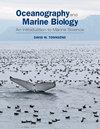The biology of vestimentiferan tubeworms
1区 生物学
Q1 Agricultural and Biological Sciences
引用次数: 78
Abstract
Vestimentiferan tubeworms, once erected at a phylum level, are now known to comprise a part of the specialised deep-sea polychaete family Siboglinidae. Their widespread and abundant occurrence at hydrothermal vents and hydrocarbon seeps has fostered numerous studies of their evolution and biogeography, ecology and physiology. Harbouring autotrophic, sulphide-oxidising, intracellular bacterial symbionts, they form large populations of `primary' producers with contrasting characteristics, from fast-growing, short-living species at vents, to slow-growing, long-living species at seeps. These different life strategies and the ways they modify the biogeochemistry of their respective environments have consequences on the macro- and meiofaunal assemblages that develop within vestimentiferan bushes. New findings indicate that postlarval recruits get infected through the skin by free-living bacteria for which growth is rapidly and specifically limited by the host to mesoderm cells around the gut that further transform into the characteristic trophosome. The resulting internal location of symbionts prompts specific adaptations of the hosts to fulfil their metabolic requirements, including unusual sulphide and carbon dioxide assimilation and transport mechanisms. Symbiont genome sequencing has improved our knowledge of potential bacterial metabolism and should rapidly open the way for new research approaches to resolve the intricate physiological relationships between a eukaryotic host and its chemoautotrophic bacterial symbionts.维氏管虫的生物学
veestimentiferan管虫,曾经在一个门的水平上建立起来,现在被认为是深海多毛类科Siboglinidae的一部分。它们在热液喷口和碳氢化合物渗漏中广泛而丰富的存在,促进了对它们的进化和生物地理学、生态学和生理学的大量研究。它们拥有自养、硫化物氧化、细胞内共生细菌,形成了大量具有不同特征的“初级”生产者,从生长迅速、寿命短的喷口物种到生长缓慢、寿命长的渗漏物种。这些不同的生命策略和它们改变各自环境的生物地球化学的方式,对植物丛中发展的宏观和微观生物组合产生了影响。新的研究结果表明,幼虫后的新成员通过皮肤被自由生活的细菌感染,这些细菌的生长被宿主迅速和特异性地限制在肠道周围的中胚层细胞中,这些细胞进一步转化为特征性的滋养体。由此产生的共生体内部位置促使寄主进行特定的适应,以满足其代谢需求,包括不寻常的硫化物和二氧化碳的同化和运输机制。共生体基因组测序提高了我们对潜在细菌代谢的认识,并将迅速为解决真核宿主与其化学自养细菌共生体之间复杂的生理关系开辟新的研究途径。
本文章由计算机程序翻译,如有差异,请以英文原文为准。
求助全文
约1分钟内获得全文
求助全文
来源期刊
自引率
0.00%
发文量
0
期刊介绍:
With increasing interest in the field and its relevance in global environmental issues, Oceanography and Marine Biology: An Annual Review provides authoritative reviews that summarize results of recent research in basic areas of marine research, exploring topics of special and topical importance while adding to new areas as they arise

 求助内容:
求助内容: 应助结果提醒方式:
应助结果提醒方式:


